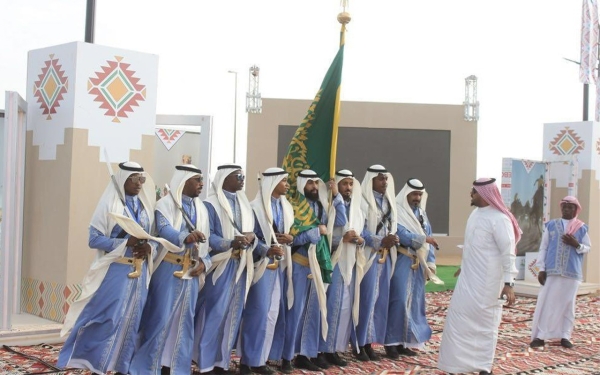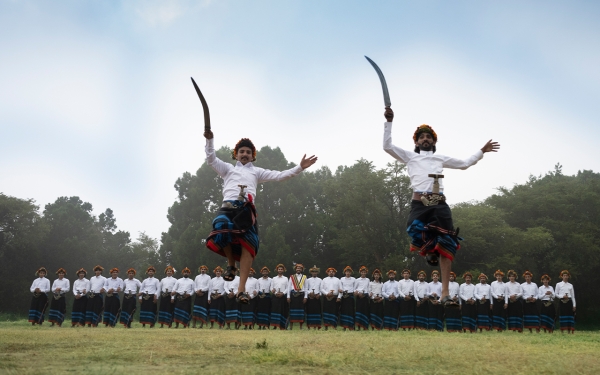



Most of the traditional dances in the Kingdom of Saudi Arabia have their origins in wartime occasions and have been treated as cultural heritage that does not accept much innovation. They are commonly known as folk dances, and mainly include:
The Saudi Ardah: also known as Najdi Ardah, is an iconic traditional Saudi dance and is an official protocol used to welcome foreign heads of state visiting Saudi Arabia. It was included in 2015 as the first Saudi element on the Representative List of Intangible Cultural Heritage of Humanity by the United Nations Educational, Scientific, and Cultural Organization (UNESCO).
Al-Khutwah (the step dance): also known as the Southern or Asiri Khutwah, is the most common in the southern regions of Saudi Arabia. Its name is derived from its performance style, as it involves taking a single step forward and then moving backward in a regular rhythm within a row of performers. Al-Azawi dance in Jazan shares similarities with the Asiri Khutwah, but it typically involves shorter steps that do not extend beyond the standing position. It is also performed with a higher frequency of steps.
The traditional Northern Dahha: is a dance that involves fierce vocal sounds made by the performers, representing readiness for battle or demonstrating savage combat skills, resembling the roaring of a lion. It is one of the chants that relies on the strength of human voices for its success, reflecting ancient customs of vocal preparation for battles. Similar to traditional dances in Saudi Arabia, the Dahha is performed by a row of performers facing another performer who engages in maneuvers with them while wearing mishlah, which is an essential part of this performance.
Al-Fajri: is one of the most famous traditional dances in al-Ahsa Governorate, which earned its name from al-Hasawi; one of the eight styles of performing al-Fijri. This dance relies on a lead singer supported by a chorus of clappers and singers.
Al-Qazoui: is one of the traditional dances in Saudi Arabia that involves the most changes in body positions. The performer alternates their weight by bending towards the center and then returning to an upright position, followed by jumping after taking about four steps. The successful performance of al-Qazoui depends on following a rhythmic pattern that includes five beats to begin a new series of steps.
Related quizzes

